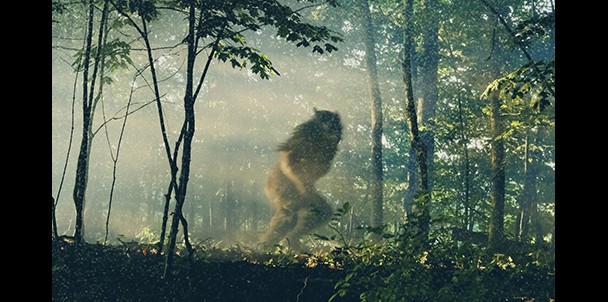So if you’ve used Google today (and if you haven’t, how do you manage?), you’ve no doubt seen the little animation commemorating the 81st anniversary of the publication of the most well known photo of the Loch Ness Monster, the so-called Surgeon’s Photo. Taken by Dr. Robert Kenneth Wilson and published in 1934, the photo seems to show a sauropod-like head and neck emerging form the waters of Loch Ness. However, the photo has since been outed as a hoax (perhaps the most famous Loch Ness Monster hoax), just a wooden model of Nessie on top of a toy submarine. Hence the clever little animation by Google. Relatedly, it was announced today that there is now a new project using Google Street View to help people (anyone on the internet, actually) search for the elusive creature.
There is now a new way to hunt for the elusive Loch Ness Monster.
Nessie hunters can now use Google Street view to look for the mythical creature.
And when people are looking in the Loch Ness area, the usual yellow Google Pegman will change to a Nessie peg-monster, giving users the power to zoom into different areas of the loch.
VisitScotland hopes the global initiative will heighten the profile of Loch Ness and Scotland.
Loch Ness expert Adrian Shine spent a number of days with the Google Street View and Catlin Seaview Survey teams as they performed an operation to photograph above and below the waters.
The launch date coincides with the famous photograph of the “Loch Ness Monster”, the Surgeon’s Photograph, which was published in the Daily Mail on April 21 1934.
Mr Shine said: “The Google project was so cloaked in secrecy, when people asked about the ripples in the loch during the special diving expeditions, for once I had no opinion.
“I’m so proud to have been part of this initiative and I hope people worldwide enjoy exploring Street View to have a look and then be inspired to travel to Scotland to discover this area of magical beauty and natural intrigue.”
VisitScotland chief executive Malcolm Roughead said: “The Street View project is hugely exciting and we are delighted the team at Google have been as inspired about our monster as the hundreds and thousands of visitors who travel to Loch Ness every year hoping to catch a glimpse.”
Research carried out 20 years ago estimated the Nessie phenomenon having an economic impact of £40 million to the Scottish economy.
With inflation, this figure would have risen to £60 million by now.
Loch Ness is recognised throughout the world, not only for the mythical icon that is Nessie, but also as an area of outstanding natural beauty.
More information on the Google Street View Loch Ness project can be found at www.google-latlong.blogspot.co.uk.
Honestly, this is a pretty cool feature for Google to implement. I’m not big on the Loch Ness monster (or any lake monster for that matter), but for those of us who can’t afford heading to Loch Ness every weekend, this is kinda nifty. Even if it is based on a Loch Ness Monster hoax…




